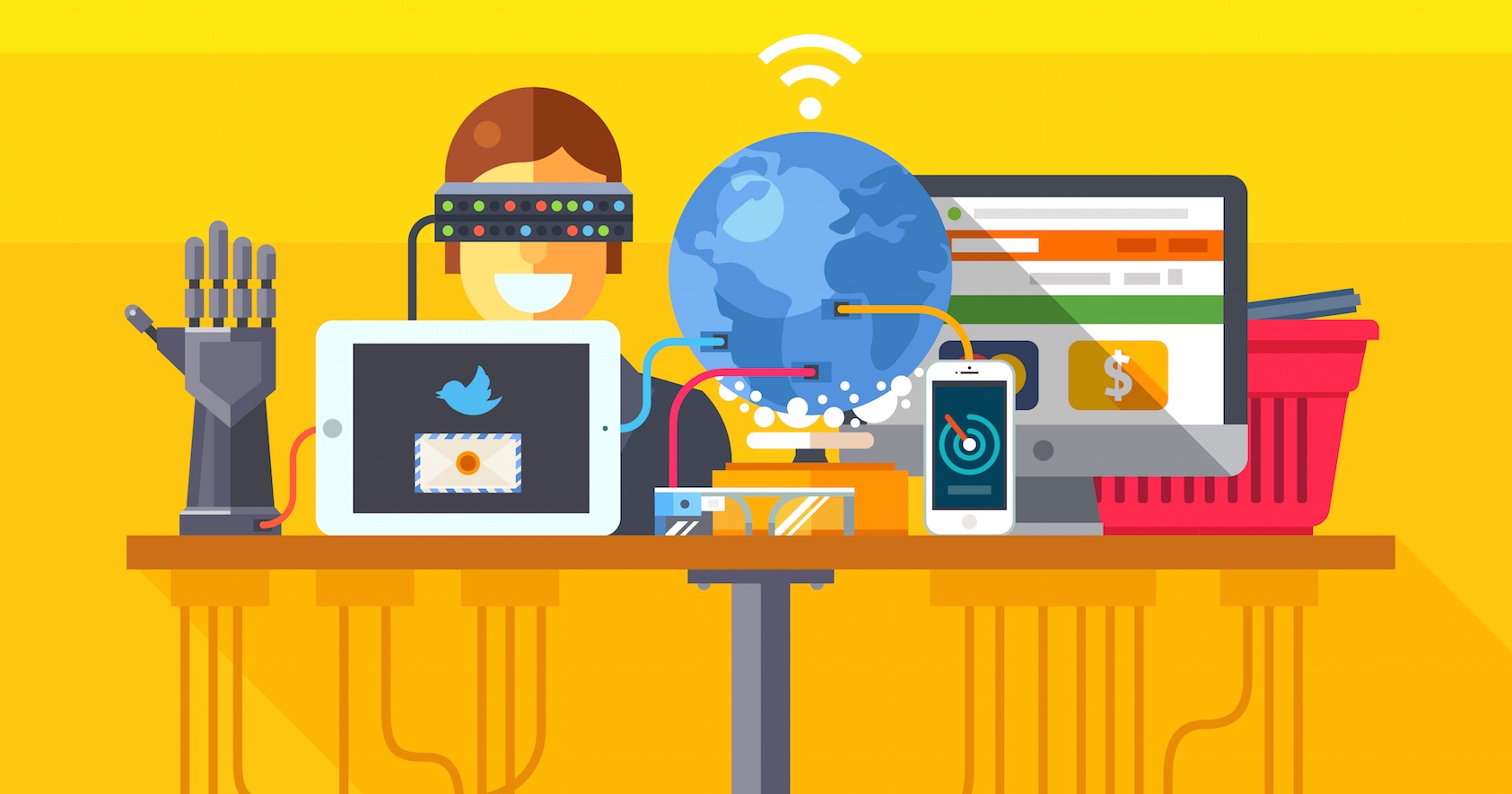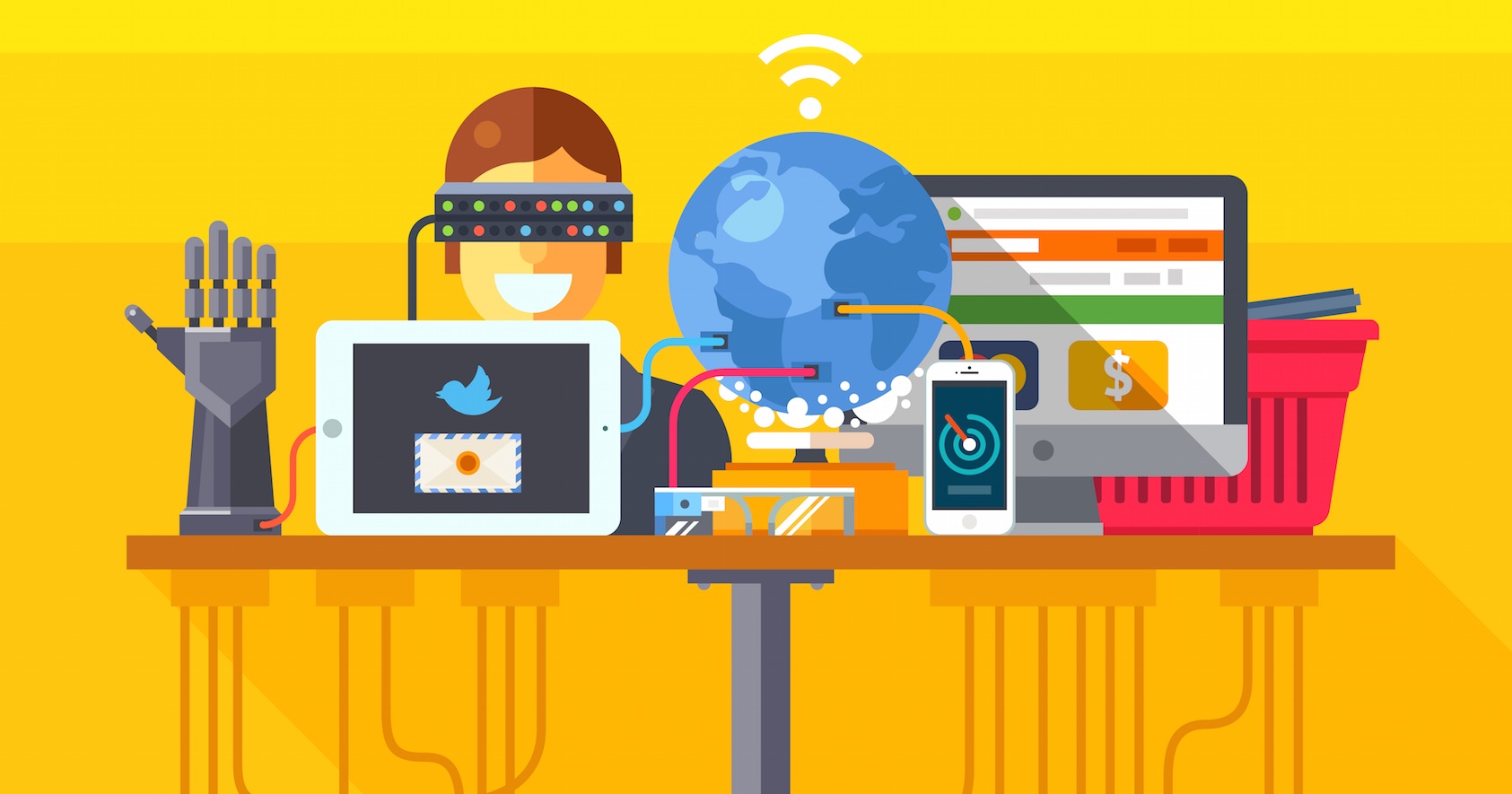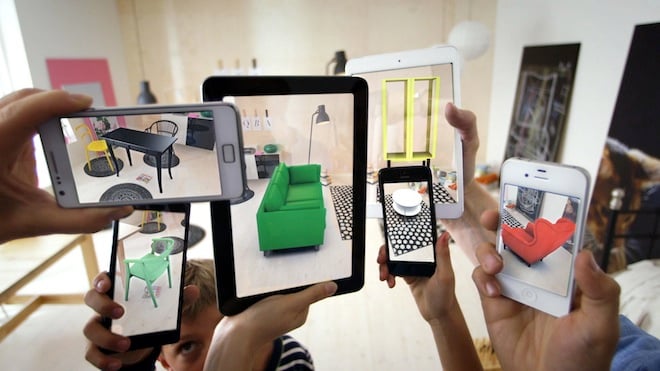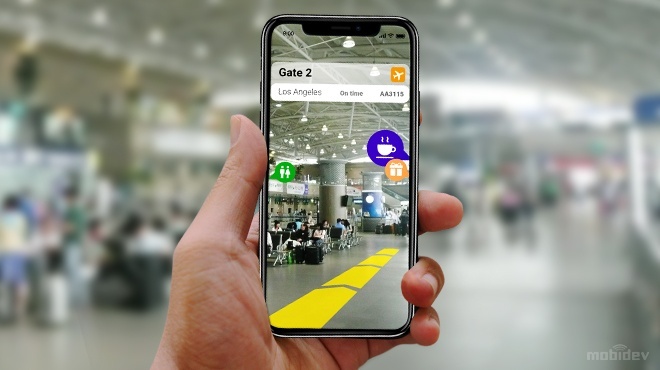5 ways Augmented Reality is changing the face of retail
Superimposing information on the world we see using technology, digitally rendering images onto our real-world surroundings, giving a sense of an...
4 min read
Anurag : Jan 9, 2020 12:00:00 AM


Augmented reality is a new trend in the digital marketing space. More companies are shifting towards adopting AR as their basic marketing and advertising strategy. The technology encapsulates innumerable benefits. The concept is witnessing a huge appreciation everywhere. It is becoming a buzzword among digital marketers. But, for those who are still distant to technology, it can be hard to analyze the effectiveness of the technology.
So, let's understand what exactly Augmented Reality is and how it can be applied to the marketing world.
Augmented reality is a technology that enables marketers to turn static objects into an intuitive real-time 3D experience. This digital technology is different from the virtual reality that immerses the consumers fully into computer-generated simulated three-dimensional space. Contrastingly, AR adds to the existing environment. It provides users digitally overlaid information of everyday objects in the real world.
Augmented reality works by superimposing computer-generated information into the real world. It provides an interactive environment for users to perceive real-world entities through an enhanced view. Thus, AR can provide users a unique experience that combines the elements of the real and virtual world. Incorporating augmented reality into digital marketing yields a wide range of benefits. Since there is a steep trend for consumers shifting towards technology the companies should work on providing them with a more engaging experience. Below mentioned are some of the top benefits provided by augmented reality in the field of marketing:
Until recently “content was king” but with the debut of AR, the scenario is quite different. Augmented reality has provided consumers a facility to analyze objects in the real world using customized mobile applications. Through this technology, consumers will enjoy availing extra information about the products. For example, in shopping centers, consumers will be able to perceive things in a 3D environment. Moreover, for certain objects, they may also check the validity of using AR technology.
With augmented reality, the advertising world will explore unimaginable opportunities. There will be seamless options available to advertise your products and engage consumers. The whole world will act as a canvas to showcase your products. Through AR you can convey a complete story about your brand to consumers. Just imagine what if your brand is represented via virtual characters that accompany users and interact with them now and then. This would be a wonderful way to promote your brand. Moreover, as a digital marketer, you can showcase the struggle of a brand through a virtual environment that can believe him believe in products or services. Thus, there are seamless opportunities that digital marketers can uncover for advertising using AR technology.
This is an effective way to drive sales. Digital marketers can employ the concept of gamification to motivate shoppers. The process involves using gaming design constituents in a real-world environment. By pairing AR with games you can you can drive engagement. Consumers will get indulged by utilizing their competitive instinct. This initiative will allow consumers to experience the brand and pave their way towards earning customized coupons, rewards, and points. With this feature consumers are likely to visit your ads and brand very often. Thereby, allowing repeated engagement which will eventually result in reduced spending on video commercials and printed ads.
Integrating AR technology organizations will be able to boost the purchasing decisions of consumers. As with AR, they will now be able to experience their products online. They can visualize the look and feel of the product in the existing environment. So, you don’t have to struggle with the challenges of imagining things. For an instance consider Lenskart, using its app you visualize the actual look of eyeglasses by wearing it inside the app itself.
Similarly, with IKEA you can virtually place furniture in your space before purchasing it. Such initiatives are likely to influence buying decisions. Moreover, by providing the provision of trying out products without actually purchasing will boost customer engagement drastically and will bring positivity in converting sales.
A few years down the line the conventional way of posting ads will change dramatically. With the intervention of AR digital marketers will be able to introduce interactive means of advertising products. Just imagine yourself scrolling through facebook feeds operated by brainwaves and suddenly you went past a Pizza shop and your news feeds started showing you ads linked to that particular pizza store. A virtual character pops up guiding you about pizzas available and their associated specialty. This would be the extent transformation in advertisements will occur. There will be endless possibilities. Thus, if digital marketers indulge in this trend they are likely to gain an edge over the competitors.
As per the aforementioned information integration of AR in digital marketing will reap substantial reformations. To sum up, the following will be advantages:
A better understanding of consumer behavior
- Boost in sales and reduced product returns
- Better decision making for the consumer
- Faster buying decision
- Tailored shopping experience
- Effective means to inform and target the audience
- Increase in marketing means
- Increased satisfaction among consumers
- Improvement in Brand image
Are you aware that some of the biggest brands around the world are leveraging the power of AR to promote their products? Here are some of the best marketing initiatives:
The Swedish furniture retailer has used AR to allow its users to visualize how a piece of furniture fits into their space. Moreover, the consumers can also customize the size of furniture according to their requirements.
This is the first of its kind app in the banking sector that allows users to search homes and also provides details about the approximate price of the property. In addition to this, the app also carries out a comparison for determining whether the property is suitable for renting or purchasing.
Another notable example of an AR application is Pepsi’s campaign. Pepsi has offered its users an AR virtual window installed along the bus station’s wall. Using this window, users are able to enjoy the views of UFOs, marauding tigers, and running robots in a virtual environment.
To boost its online product sale, Sephora the makeup brand has created an app that allows its users to test products using a mobile camera. The app enables users to visually observe how products look on them.
Change is the very essence of nature. And the technology of AR is going to bring that revolutionary change. It will create a boom in the coming years. Moreover, as compared to conventional digital marketing methods AR-based marketing is going to be very beneficial. It is mobile-friendly, less expensive, and serves better opportunities for attracting customers. The integration of AR in digital marketing can provide consumers a whole new experience. So, advertisers must adopt augmented reality into their marketing campaigns.

Superimposing information on the world we see using technology, digitally rendering images onto our real-world surroundings, giving a sense of an...

Technology has always played a significant role in enhancing the lives of human beings. It has contributed immensely to revolutionizing everyday...